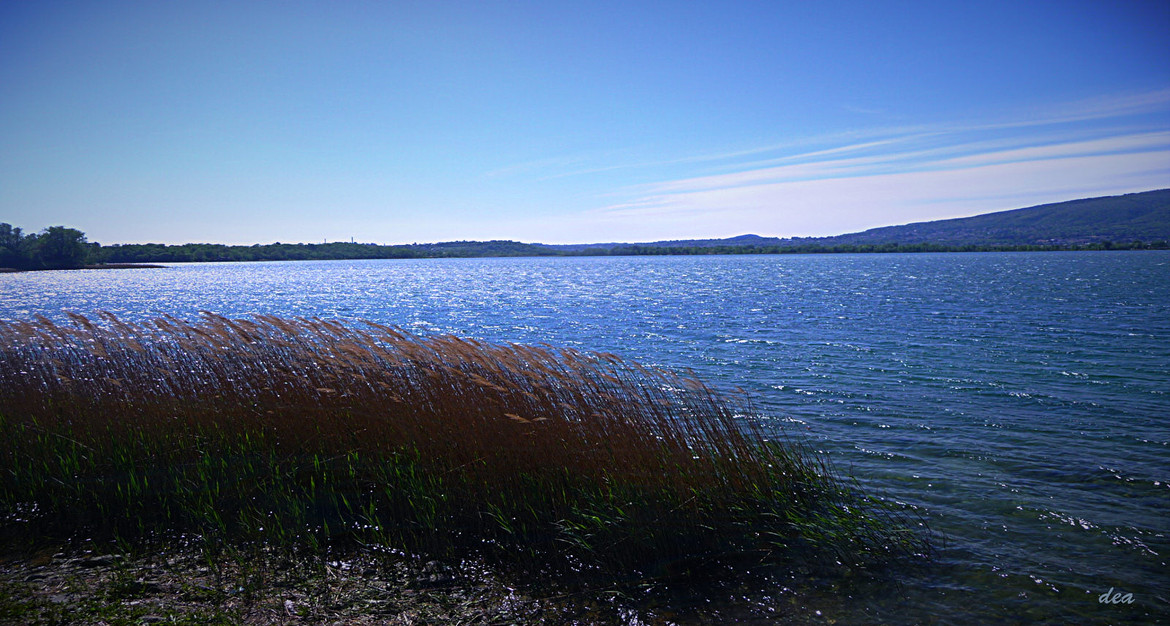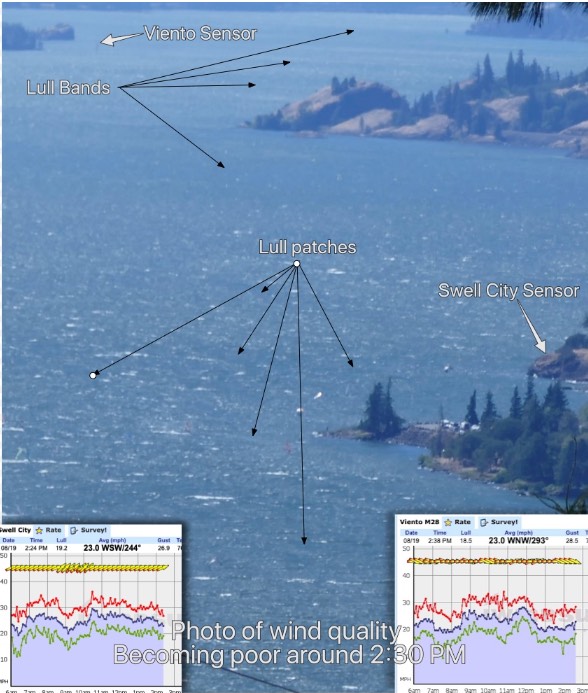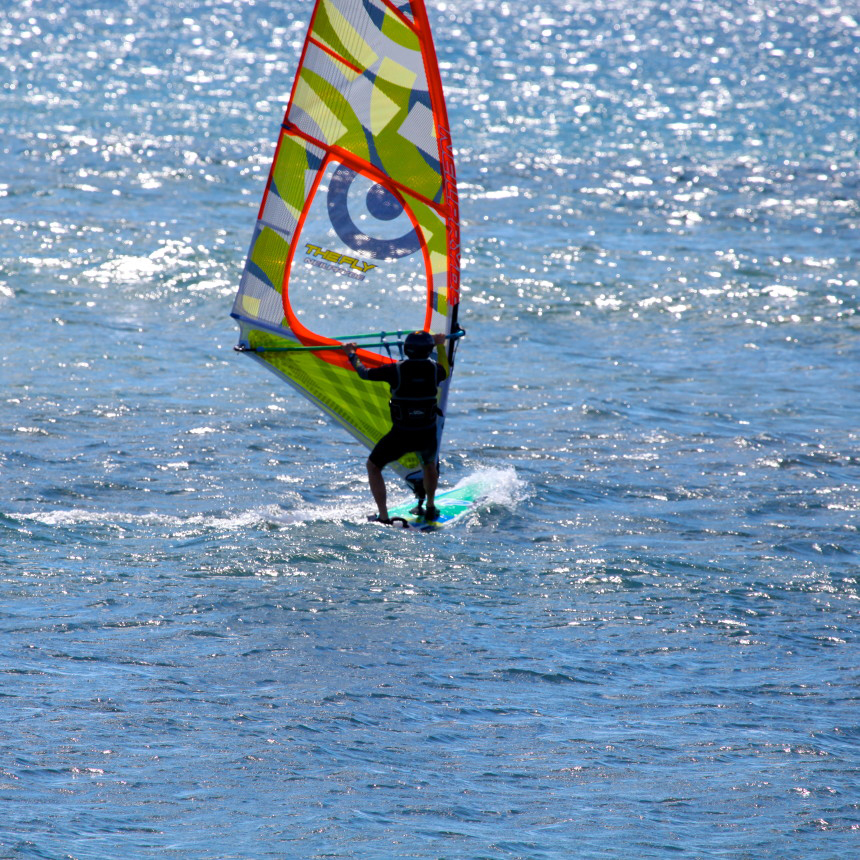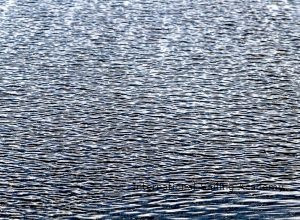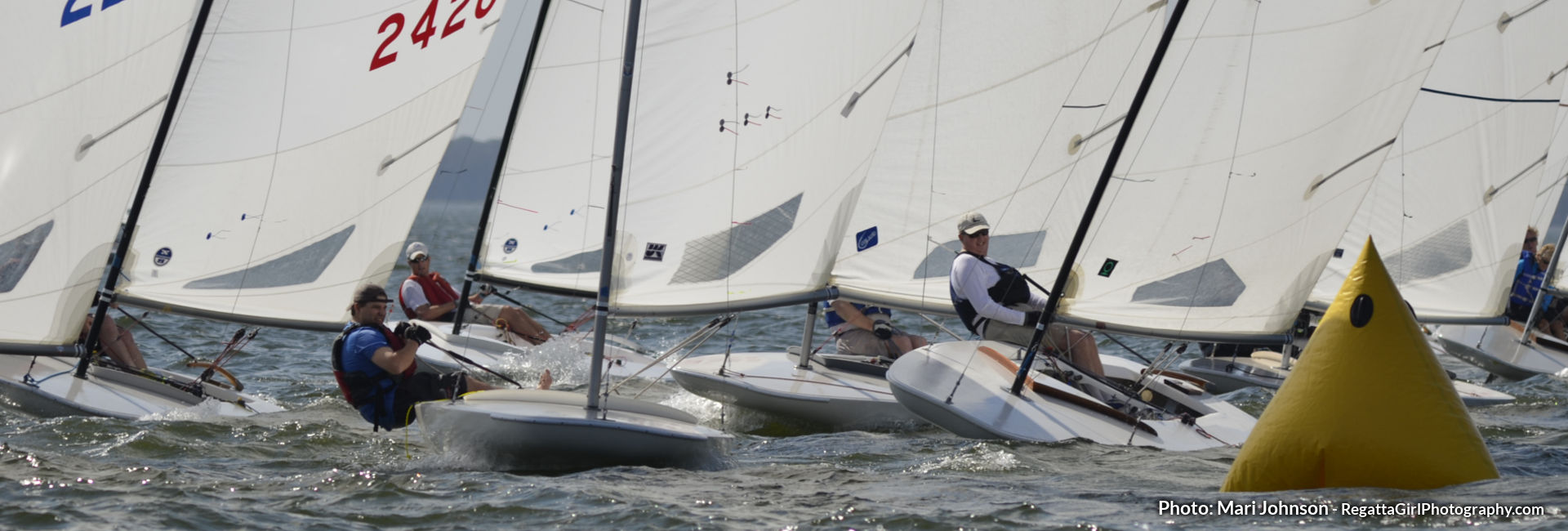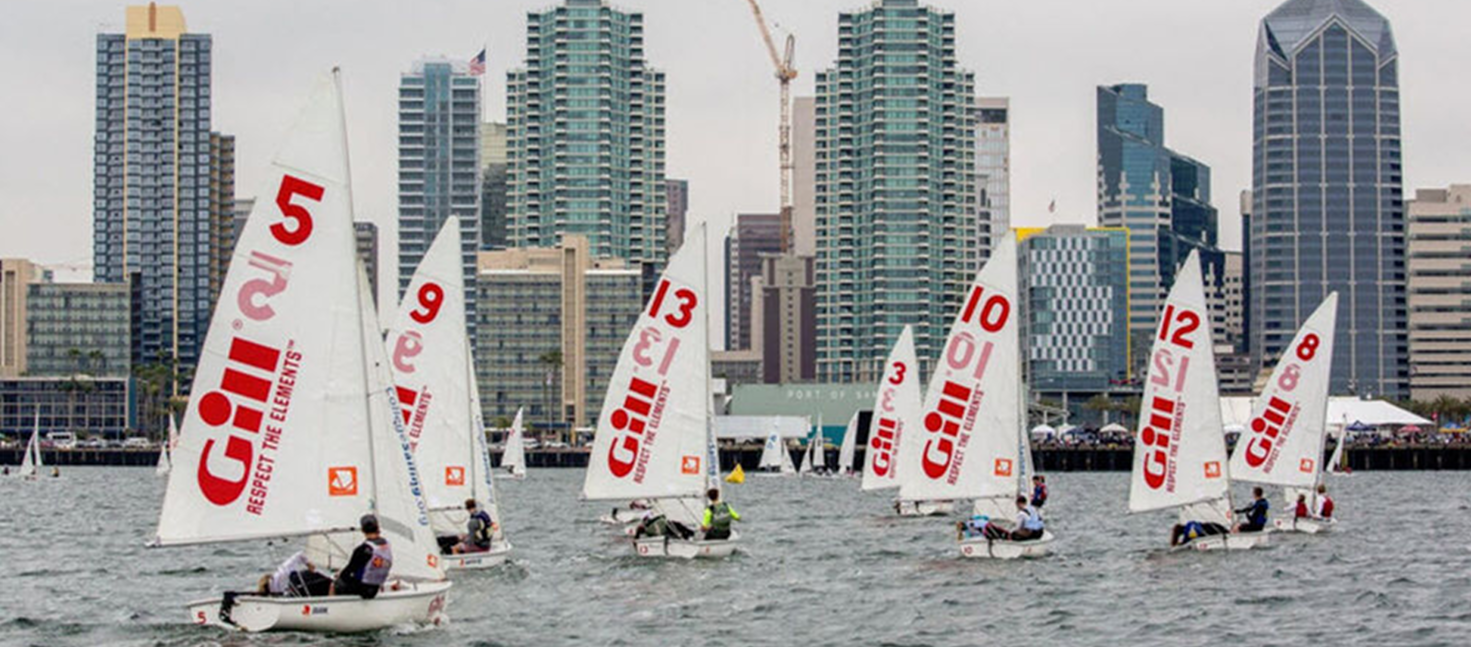You will always be behind the curve if you’re reacting to changes in the wind, rather than anticipating them. Seeing wind on the water will help you keep your boat moving in puffs and lulls, anticipate lifts and headers, and tell you where to go on the course
Seeing wind on the water is a complex skill that expert sailors have developed over many years. We can all sharpen our senses and practice to get better over time. In this post, we’ve collected the best advice we could find from books and online resources.
We updated this previously-published post with new material, photos, links, and clearer organization.
Seeing Wind on the Water – Wind Strength
You always want to sail in more wind, and especially in lighter air when increased wind makes a huge difference in boat speed. To find areas with more wind, use the following clues:
Texture
By texture, we mean the ripples or small wavelets generated by the wind impacting the water. You can see the individual ripples up close. From a distance, they make the water look coarser or darker.
Click on the link at the right to see the picture from WeatherFlow Blog in larger size. The picture points out lulls appearing in both bands and patches. It’s easier to see the bands than the patches. Use the author’s arrows to help spot them.
Don’t confuse texture with waves. Texture tells you that there is wind there now. Wind-generated waves tell you that there has been wind across an area, but without texture, there is probably less wind there now.
Don’t automatically assume that darker water has more wind. An area may be darker due to clouds or the angle to the sun, but not contain any texture. Sparkles on the water can be useful if they show a pattern that differentiates between coarse and smooth water. The picture at the right from Shawna Cropas’ website show an examples of sparkles indicating texture. Click on the picture for a larger view. Click on the caption for the website.
One more caution: Sometimes there will be wind at the surface, but no ripples, for various reasons such as surface tension and wind shear. See our post on Wind Shear and Gradient for more.
Larger waves, whitecaps, and streaks
Larger waves, whitecaps, and streaks are indications of progressively increasing wind. The best reference for this is the Beaufort Scale, which allows you to estimate wind speed by the visual appearance of the water.
- 4-7 mph
- Small waves that do not break.
- 8-12 mph
- Slightly larger waves. Wave crests may begin to break.
- Streaks begin to form, created by Langmuir circulation. These streaks are glassy lines in the same direction as the wind.
- 13-18 mph
- Waves become longer.
- Frequent whitecaps (called white horses in the Beaufort scale).
- 19-24 mph
- Longer and more pronounced waves
- Many whitecaps
Seeing Wind on the Water – Wind Direction
Small ripples
Small ripples are the best up-close indicators of wind direction. They are not the same as the larger waves on the water, which often do not accurately show the wind direction. Try to picture horizontal lines connecting the crests of these ripples. These lines are perpendicular to the wind direction. Also the inner side of the curved ripple points toward the wind. Click on the picture at right to see a visual test from the International Sailing Academy.
Moving Puffs
Puffs commonly move across the water, although this isn’t always true. We’ll explore “stuck puffs” in a future post. Moving puffs don’t always move directly downwind, and you can use their motion to make gains. If you’re sailing close-hauled upwind, watch the puff’s angle of approach compared to your course.
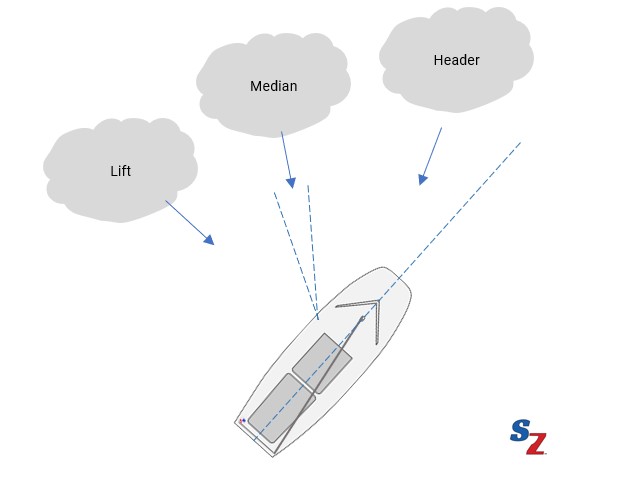
- Puff approaching from 45 degrees or forward. The puff will be a header. Think about tacking immediately as the puff hits, unless there are reasons to keep going. Every meter you sail in a header is distance lost to windward. Tacking immediately in a header also improves the tack, since you will tack through a smaller angle, For example, tacking in a 20 degree header reduces your tacking angle from, say 90 degrees to 70 degrees.
- Puff approaching from 45 – 60 degrees. This puff will probably be in the same direction as the wind you are sailing in. Prepare to ease/feather, hike, and trim.
- Puff approaching from aft of 60 degrees. This will be a lift. Prepare to ease and smoothly head up to the new higher course while trimming in.
Improve Your Skills
Ingham’s Insight: Wind Spotter, and How To See Wind on the Water When Sailing, both from from Sailing World have a good collection of tips to improve your observational skills. These include:
- Good vision – have yours checked
- Use quality polarized sunglasses to reduce glare. Clean your glasses frequently.
- Tilt your head back and forth – the polarized glasses will give you different views
- Look twice – look away and then back
- Higher up – stand in the boat
- Scan the area, rather than focus on one spot.
- Check frequently – things change quickly.
- Before the start, sail on a reach across the course to see the effects of sun and clouds.
- Look at the water where the clouds are changing – cloud changes may indicate wind changes
- Confirm your water observations by looking at smoke, trees, flags, and other boats – heel angle, hiking, pointing angle, speed
- Get on a boat (motor or sail) and practice calling puffs, including their timing and direction. In a motor boat, bring along a wind stick. Check your predictions with the feel on your skin, sound in your ears, and the reaction of the boat or wind stick.
Related Content:
Get Your Head out of the Boat!
MC-Scow Southeast Regional Regatta: Race Course Notes – discussion about the importance of reading the course
Ripples on a Pond – video showing how small ripples merge with larger ripples
Light Air on Lakes: More Wind Near the Shore?
Sailors Helping Sailors
Will you share your knowledge with your related Comments below?

